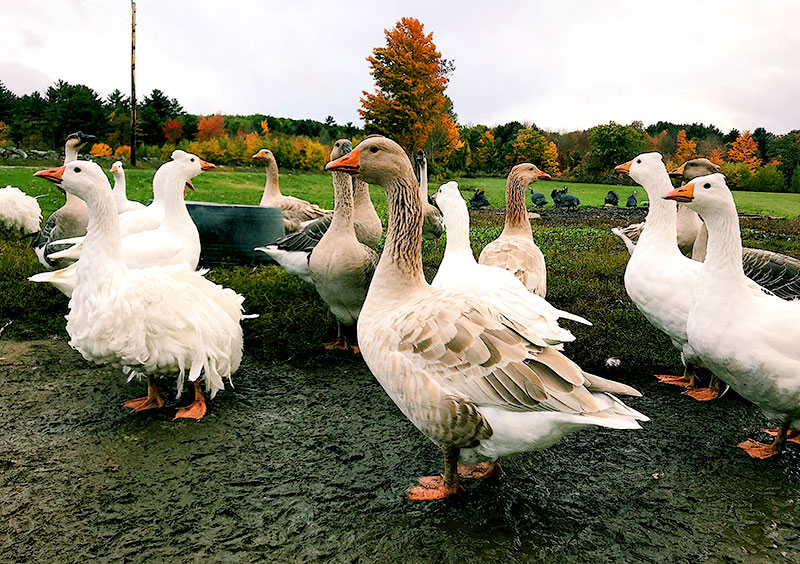
Expanding your flock can be one of the most fun parts of spring and summer on the farm. That said, it’s important to do it safely, so that all your birds are as free of stress as possible. Flocks of birds maintain a strict and aptly named pecking order. When you introduce new birds, such as geese and ducks, you should disturb this social structure as little as possible.
With any type of bird, the first rule is patience. If you’re introducing young birds, make sure they are old enough to be integrated with your established flock. A good rule of thumb is 6 to 8 weeks of age. But use your judgment in comparing the size of your existing birds to the new ones. If the new birds are a lot smaller, they’re more likely to be bullied. Also, if you introduce only two or three new birds they are more likely to be picked on than if you introduce a larger group.
Ducks and geese, generally speaking, are more curious and less violent than chickens. While there can still be violent fights, introductions are often a little bit more “getting to know you” and less harsh than can be the case with chickens. As long as the new birds are old enough and large enough, waterfowl introductions should involve a few nips and pecks, but nothing more aggressive.
First, Let the Birds See One Another
The first step to introduce new birds to an existing flock? Limited introductions. Use a cage within the coop, or fence off an area of your run for the new birds. This way, the established flock can see them but the two groups cannot interact physically. You can also give the new birds some supervised time with the rest of the flock, maybe 10 or 15 minutes a day, as long as you are close by to intervene if necessary. It is easiest to do these kinds of introduction visits when the birds are free-ranging or in a large run. This way, there’s space for the new birds to wander away from the existing flock.
Orchestrate the Full Introduction
After a week or two of short visits and viewing each other, you can fully introduce your new waterfowl. I often do this in the morning when I let everyone out for the day. This way, their first full time together is in a larger area. This allows the new birds to find their own space if they need it. Do this on a day that you can be around to watch how they get along and then finally coop them up together in the evening.
There will inevitably be some fighting when you introduce new birds. You should intervene only if a bird is getting hurt, because it is important to allow them to establish dominance and order within the flock. If a bird is getting hurt, separate it and return it to the space where everyone can see but not bother each other for another week or two.

Be Cautious With Adult Geese
There is an exception for geese. Geese, as much larger birds, can in theory be introduced to a flock of ducks or chickens fairly easily. However, there is always a risk of the goose becoming aggressive toward those smaller birds. I do not recommend cooping adult geese with ducks or chickens at night. They can kill smaller birds during their mating season. Young geese might be introduced OK this way, but it’s important to monitor their behavior.
If you are introducing adult birds purchased from a neighboring farm, make sure to allow a quarantine period for health reasons. The new birds should be kept in a space where they cannot interact with the existing flock at all, and their behavior and health can be watched. You should do this for a minimum of two weeks before beginning the integration process.
With proper time and care given to introducing new birds, you’ll have a happy, integrated flock of waterfowl in no time.




